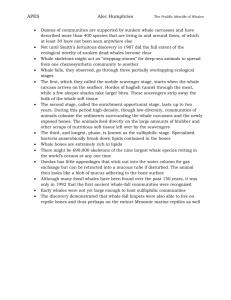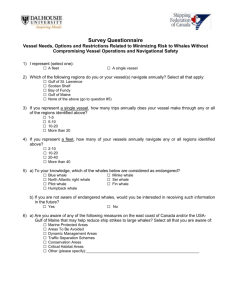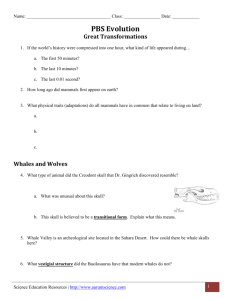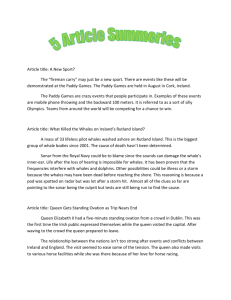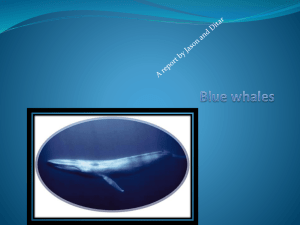Southern right Whale
advertisement
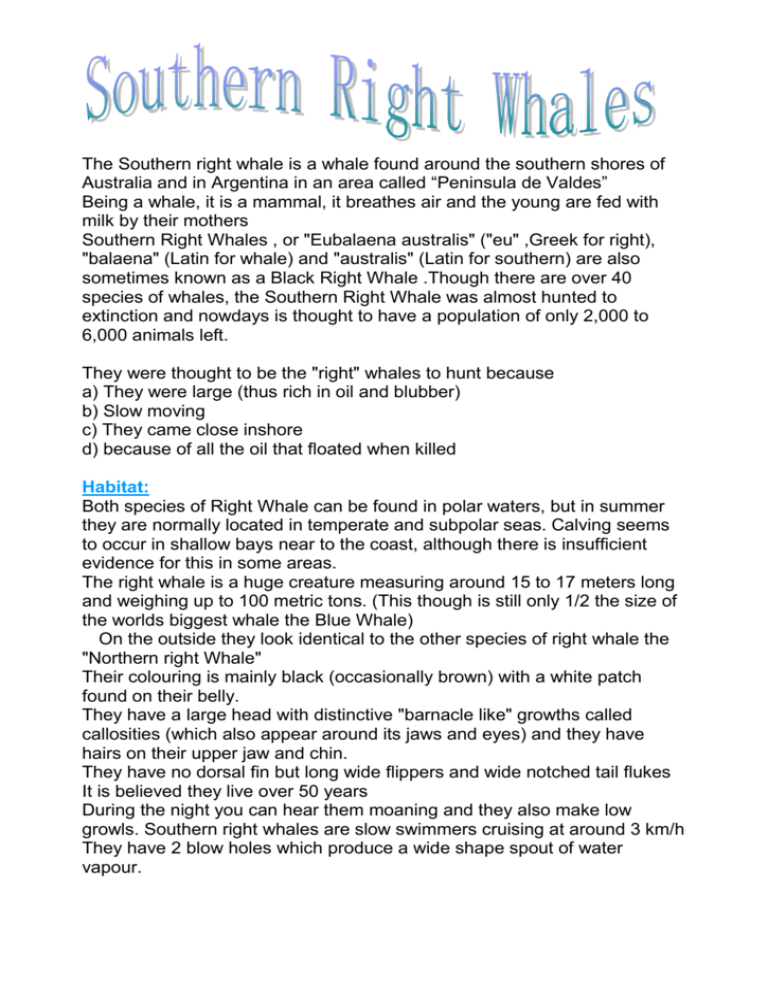
The Southern right whale is a whale found around the southern shores of Australia and in Argentina in an area called “Peninsula de Valdes” Being a whale, it is a mammal, it breathes air and the young are fed with milk by their mothers Southern Right Whales , or "Eubalaena australis" ("eu" ,Greek for right), "balaena" (Latin for whale) and "australis" (Latin for southern) are also sometimes known as a Black Right Whale .Though there are over 40 species of whales, the Southern Right Whale was almost hunted to extinction and nowdays is thought to have a population of only 2,000 to 6,000 animals left. They were thought to be the "right" whales to hunt because a) They were large (thus rich in oil and blubber) b) Slow moving c) They came close inshore d) because of all the oil that floated when killed Habitat: Both species of Right Whale can be found in polar waters, but in summer they are normally located in temperate and subpolar seas. Calving seems to occur in shallow bays near to the coast, although there is insufficient evidence for this in some areas. The right whale is a huge creature measuring around 15 to 17 meters long and weighing up to 100 metric tons. (This though is still only 1/2 the size of the worlds biggest whale the Blue Whale) On the outside they look identical to the other species of right whale the "Northern right Whale" Their colouring is mainly black (occasionally brown) with a white patch found on their belly. They have a large head with distinctive "barnacle like" growths called callosities (which also appear around its jaws and eyes) and they have hairs on their upper jaw and chin. They have no dorsal fin but long wide flippers and wide notched tail flukes It is believed they live over 50 years During the night you can hear them moaning and they also make low growls. Southern right whales are slow swimmers cruising at around 3 km/h They have 2 blow holes which produce a wide shape spout of water vapour. The calf consumes over 100lires of milk daily and is weaned after 1 year. As earlier mentioned they were hunted close to extinction due to them being the "right" whale to hunt due to its large size, slow movement, proximity to shore, and that they floated when killed. Their numbers went from 100,000 around the year 1800 to only 3,000 in 1935. More numerous sightings recently, hopefully means numbers are on the increase. Food: Southern Right Whales eat up to 400 kg of food a day. They are seasonal feeders and carnivores that filter feed plankton and tiny crustaceans like copepods, krill, etc., from the water.Usually they feed below the surface, occasionally near to the seabed, on concentrations of copepods. Surface feeding has also been observed. The reason why they eat such small food is because of their baleen plates and their throats are rather small, They can't even swallow an orange. Right whales are skimmers, filter feeders that swim slowly with their mouth open, constantly eating. On occasion, they are also bottom feeders, eating benthic prey from the mud on the ocean floor. The fine baleen hairs can filter out very tiny prey including copepods, steropods, euphasiids and mysids (tiny crustaceans). They swallow over 2 tonnes a day ! They can spend over 1/2 their day feeding. Behaviour: Right Whales are, despite their massive bulk, incredibly active cetaceans, with breaching, lob-tailling and flipper-slapping all relatively common. A particular favourite is 'sailing', where the whale hangs vertically upsidedown in the water, 'standing' on its head, with its tail flukes in the air. They communicate through 'moans' and 'burping' noises. BREEDING Though several males may try to fertilise a female, only one male is successful. These two do not mate for life. The female cow is then pregnant for a year and tends to give birth in the winter in shallow coastal waters. The new-born weighs around 1 tonne and is 4 to 6 meters long and stays very close to is mother for the first year of its life and still remains close for the next 2 years as the bond between calf and cow is very strong. The calf consumes over 100 lires of milk daily and is weaned after 1 year. Basically the right whale migrates from its summer eating grounds near Antarctica to their breeding grounds of the southern continent like Australia,. Prior to their complete protection in 1937 Southern Rights were hunted close to extinction due to their being the “right” whale to hunt; slow moving, shore hugging whales which floated when dead. ANGERED The Influence of Man: Both species of Right Whales were the first large cetaceans to be commercially hunted by man, possibly as early as the 10th Century. In the nineteenth century alone, over 100,000 whales were slaughtered, and, although having been granted protection in 1935, it is doubtful that this species will ever recover. Problems with the hunt of the whales Why are they in danger of extintion? Today the world population numbers about 2,000 of which 500 visit southern Australian waters to mate and breed. From an estimated world population of 100,000 whales, 30,000 were taken from Australian and New Zealand waters alone from whalers. The name came from whalers because they believed it was the 'right' whale to catch since it was a slow swimmer, yeilded high bludder and oil and it even floated when dead so they went after it. It is feared that the eastern American stock, now less than 300, is in great danger of extinction due to the accidental deaths of right whales involved in shipping accidents. It may never recover and become extinct in America. The whales mate and give birth in warmer water, but there is no food in these warmer waters for the mothers, who must fast while they raise their young. They swim on the surface to get plankton and are made easy targets for predators. When they are in the shallow warmer waters the are closer to the whalers and easier targets. Whalers get big money from the slaughter of whales. In Japan whale meat can fetch up to $30 per kilogram. Solutions that we can do to save them: To stop the killing of whales for commercial and cultural purposes. Stop the needless killing of whales. Reduce accidental whale deaths by beaching act.. Research the whales to try find a miracle to breed them and bring their numbers back up. Fund money to pay coast guard or other navy to watch and guard the remaining populations of Southern Right Whales from whalers and it shouldn't take long for all the whalers to give up or end up in jail. Control whale tourism to avoid disturbing the southern right whales. When come across a Southern Right Whale whale stay at a distance to avoid disturbing or accidental injury by propeller. Donate money to the Whales in Danger fighting Trust Fund. The money will not be spent and you will get it back they are only borrowing it like a bank and are putting it in trust accounts and making interest from it which they will save the whales with. You will get a lovely Certificate with amount on it from them. Just send it to them at and remember to supply them with address and details. The navy should stop using Low frequency active sonar and research or get new advanced radars which do not disturb the whales. By Manuela and Maria Inés




